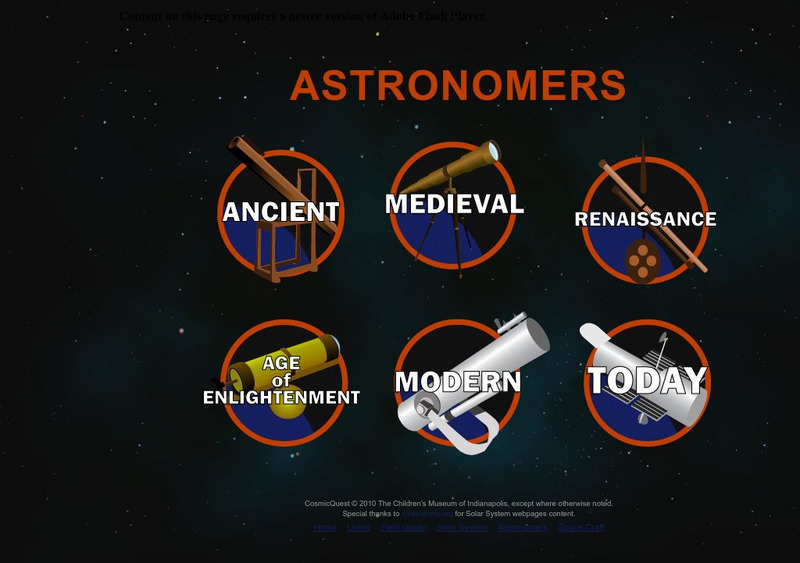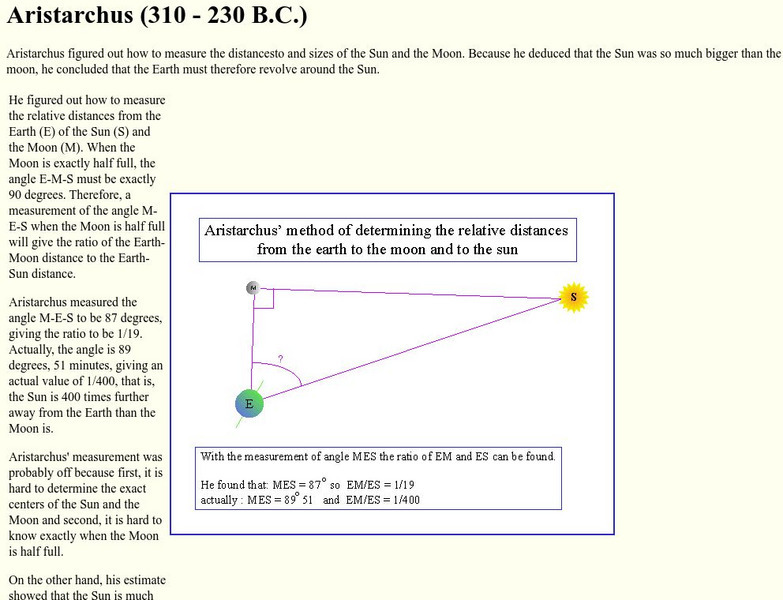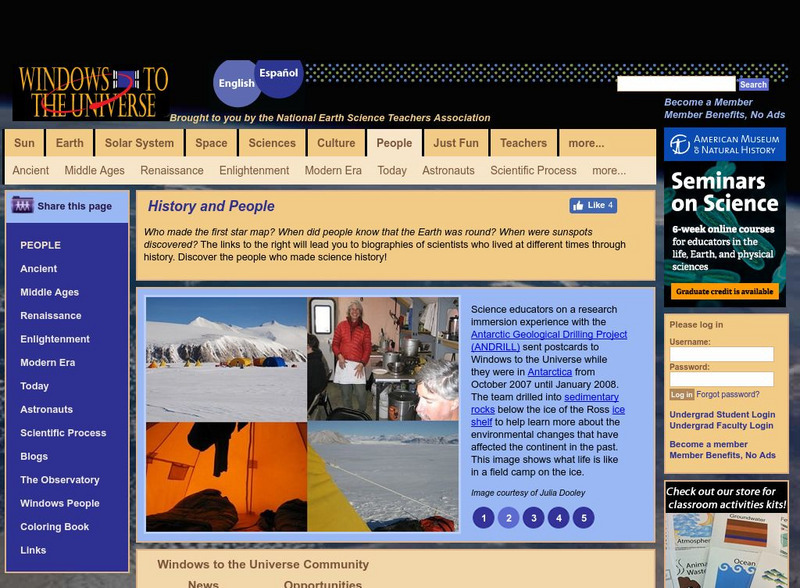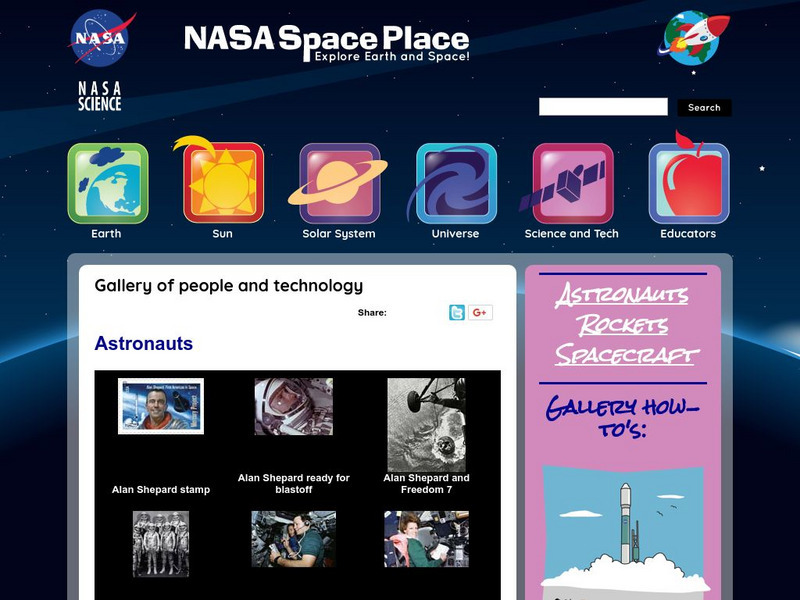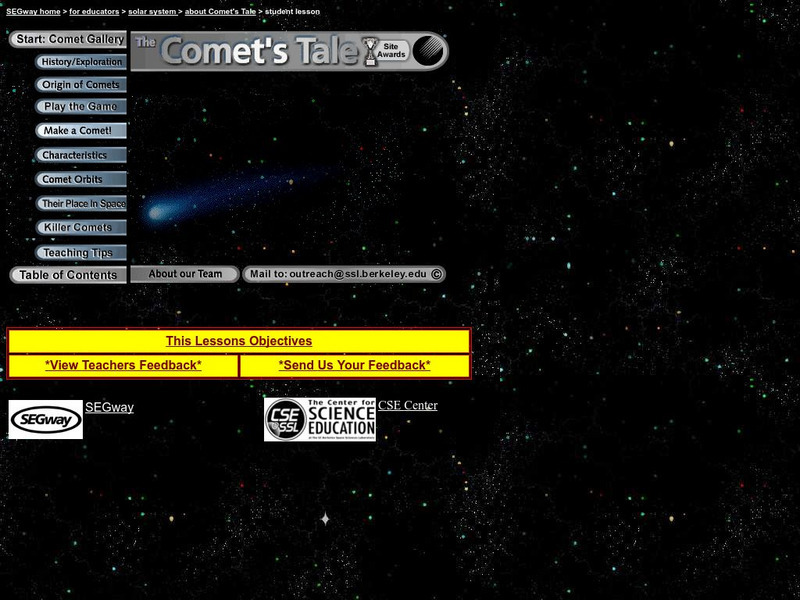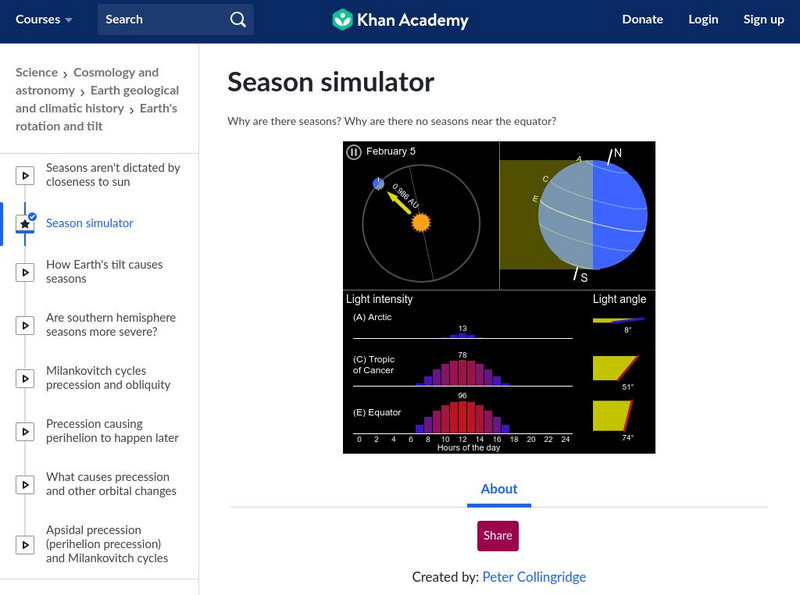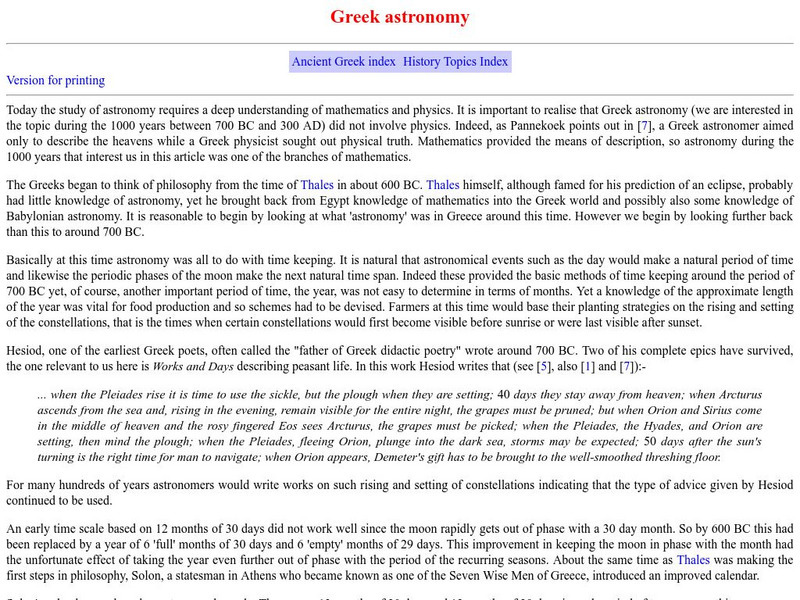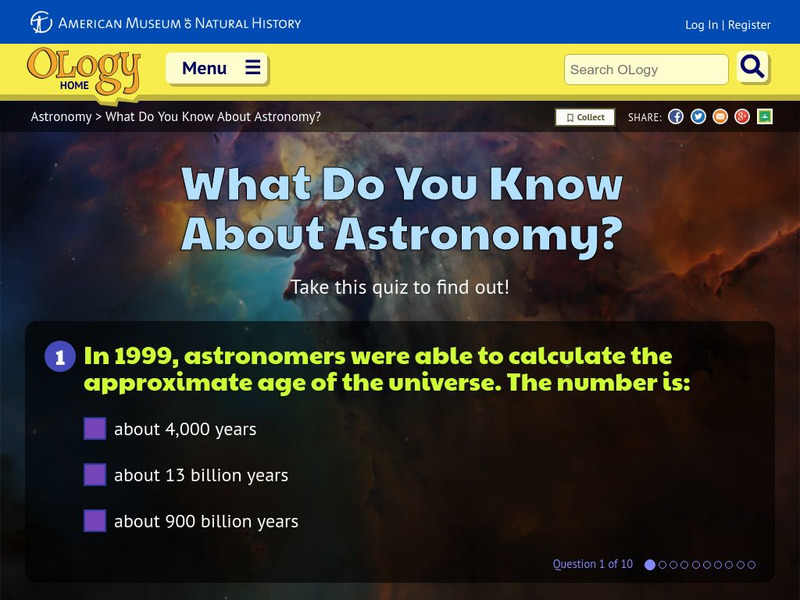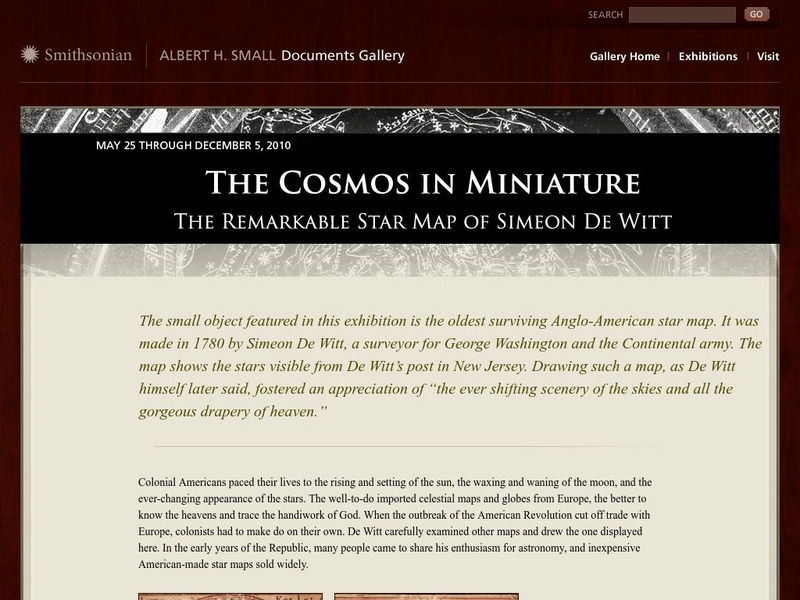Hi, what do you want to do?
World History Encyclopedia
World History Encyclopedia: Greek Astronomy
Looks at the history of Greek astronomy from the 4th century BC on, and the major figures who contributed ideas. Includes a timeline of Greek science.
Children's Museum
Children's Museum of Indianapolis: Cosmic Quest: Astronomers
Explore the achievements of notable astronomers beginning with ancient times through modern space explorers.
Other
The Space Race
Although the space race was originally a competition between two Cold War foes,it ultimately resulted in many benefits for the people of the Earth. Find information on the Mercury, Gemini, and Apollo, and Soviet space programs,...
Cornell University
Cornell University: Astronomy: Aristarchus
This site from Cornell University provides a discussion of how Aristarchus arrived at his conclusions of the distance from the Earth to the Sun and Moon. Also has his methods for determining the size of the Moon and the Sun.
British Library
British Library: International Dunhuang Project: Chinese Astronomy Resource
Using the early Dunhuang Star Atlas, an important historical and scientific document of the sky seen from China dating from before AD 700, learn about astronomical history from the perspective of China. Find resources and analysis that...
Other
4000 Years of Women in Science
A site that celebrates the place of women in scientific research since history began.
University of St. Andrews (UK)
University of St. Andrews: Christopher Clavius
This site, which is provided for by the University of St. Andrews, gives a brief biography of Christopher Clavius with references for additional study.
National Earth Science Teachers Association
Windows to the Universe: History & People
Biographies of people throughout history who looked at the sky and wondered what was there. Links to a detailed description of the planets and interactive activities.
NASA
Nasa: The Space Place: Gallery of People and Technology
NASA has provided a whole page full of images for you to download and print. These pictures are labeled and can be enlarged.
University of California
Univ. Of Cal Berkeley: The Comet's Tale
Site provides extensive information in the study of comets. Includes excellent graphics that depict what comets look like as they travel through the solar system. Also includes information on how comets may have effected the Earth's...
Christian Science Monitor
Christian Science Monitor: The Map of the Millennium
This article from the Christian Science Monitor explores the impact of key astronomical discoveries of the past millennium on science and religion.
University of Virginia
University of Virginia: How the Greeks Used Geometry to Understand the Stars
An article explaining how the Greeks were able to use their science and mathematics to predict where astronomical objects such as the Planets could be found in the nighttime sky even though their underlying premise was that the earth did...
Other
Astronomylinks
This is a very comprehensive site on the subject of Astronomy and Astrophysics. The site has links to many sites on topics including astronauts, astronomy, astrophysics, education, jobs, etc.
Khan Academy
Khan Academy: Cosmology and Astronomy: Season Simulator
This season simulator takes Earth through an entire year cycle allowing the viewer to observe the tilt of the Earth and the intensity of the sunlight.
The History Cat
The History Cat: Mayan Achievements
Discusses the Maya system of astronomy and their calendar.
University of St. Andrews (UK)
University of St. Andrews: Greek Astronomy
Provides an overview of ancient Greek astronomy and the major figures who played a role in developing ideas about the Universe.
Other
Explorable: Ancient Astronomy, Science and the Ancient Greeks
Discusses the influences of other cultures on ancient Greek astronomers, and the advances made by the Greeks. It highlights major astronomers and those who contributed important ideas from the 6th to the 2nd centuries BC, including...
Texas Instruments
Texas Instruments: Space Exploration Time Line
This site provides a time line of the history of space exploration.
American Museum of Natural History
American Museum of Natural History: O Logy: What Do You Know? Astronomy
Take this ten-question self-scoring quiz to test your knowledge of astronomy facts: age of the universe, why stars and planets are spheres, where other life might exist in the outer space, the Milky Way, and more.
Smithsonian Institution
National Air and Space Museum: Exploring the Planets: Ancient Times & the Greeks
In ancient times only five planets were known: Mercury, Venus, Mars, Jupiter, and Saturn. Learn about Greek astronomer Ptolemy's theory for the solar system that was to survive for fourteen centuries.
American Museum of Natural History
American Museum of Natural History: Ology: In Pictures: Journey to the Stars
Two astrophysicists present images of stellar phenomena in this resource and explain why stars are so important to the existence of life on Earth.
Smithsonian Institution
National Museum of American History: The Remarkable Star Map of Simeon De Witt
Simeon de Witt created his star map in 1780 after studying European star maps and the skies. His is the 'oldest surviving Anglo-American star map.' Read about the history of star maps, a biography of Simeon de Witt, and the influence his...
Space Telescope Science Institute
Amazing Space: No Escape: The Truth About Black Holes
This site is for teachers or anyone interested in detailed information on black holes. Lesson plans are included as well as a grab bag of web images. Students have a chance to write and submit a paper on black holes and to explore the...
CK-12 Foundation
Ck 12: Earth Science: Revolutions and Rotations of the Earth Study Guide
[Free Registration/Login may be required to access all resource tools.] Summarizes the key points about how our understanding of the Earth's movements evolved from ancient times and what we know today. Includes some questions to check...






